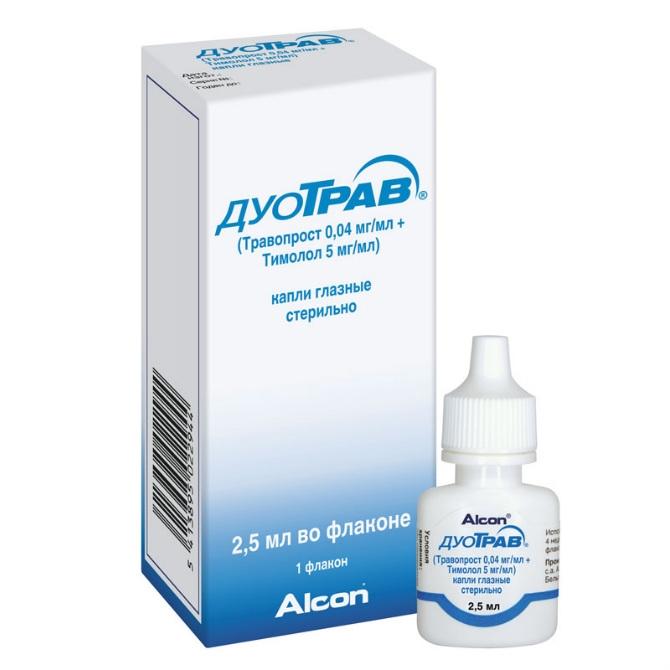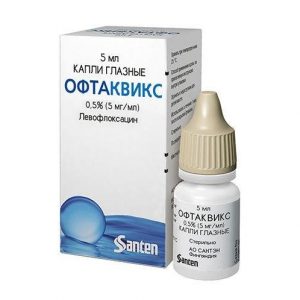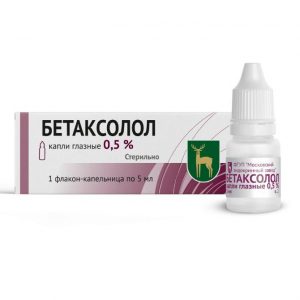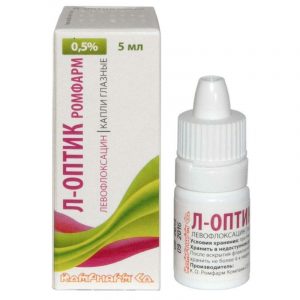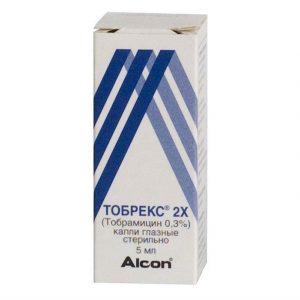Description
Latin name
DuoTrav
Release form
eye drops.
Packaging
In 1 dropper bottle of 2.5 ml solution. In a foil bag 1 dropper bottle. In a cardboard box 1 packet of foil.
Pharmacological action
Travocort – antifungal, antibacterial, anti-inflammatory.
Pharmacodynamics
Isoconazole is a synthetic derivative of imidazole. It has a wide antifungal and antibacterial spectrum of action.
Fungicidal and bactericidal. Suppresses the synthesis of ergosterol membranes of fungal cells, causing its death, blocks the synthesis of bacterial proteins. It is active against dermatophytes (Trichophyton spp., Microsporum spp., Epidermophyton spp., Etc.), mold, yeast, and yeast-like fungi (Candida spp., Pityrosporum orbiculare / ovale (Malassezia furum erytococylphyritum bacterium minutissium minutissium minutissium minutissium spp., Streptococcus spp.
Diflucortolone valerate – GCS for topical administration, has anti-inflammatory, antiexudative, anti-allergic and antipruritic effects
Pharmacokinetics
No pharmacokinetic studies have been performed p4rofopfrd45545 pharmacopract4545 classical analogue of prostaglandin F2-alpha, is a highly selective agonist of prostaglandin FP-receptor and lowers intraocular pressure by increasing the outflow of aqueous humor. The main mechanism of action of the drug is associated with an increase in uveoscleral outflow. It does not significantly affect the production of aqueous humor.
Timolol is a non-selective beta-adrenergic receptor blocker without sympathomimetic activity, does not have a direct depressive effect on the myocardium, and does not have membrane-stabilizing activity. When applied topically, it reduces intraocular pressure by reducing the formation of aqueous humor and a slight increase in its outflow.
Intraocular pressure decreases approximately 2 hours after application, and the maximum effect is achieved after 12 hours. A significant reduction in intraocular pressure may persist for 24 hours after a single use of the drug.
Pharmacokinetics
Travoprost and timolol are absorbed through the cornea of the eye. In the cornea, hydrolysis of travoprost takes place to a biologically active form – acid of travoprost.
Travoprost after topical administration is rapidly excreted from the plasma within an hour – the plasma concentration decreases below the detection threshold – less than 0.01 ng / ml (it can vary from 0.011 ng / ml to 0.02 ng / ml).
The maximum concentration (C max) of timolol in the blood plasma is 0.692 ng / ml and persists until the detection threshold for 12 hours, and T max timolol is reached within an hour after topical application.
T 1/2 timolol is 4 hours after topical application of DuoTrava.
Travoprost is excreted as inactive metabolites mainly with bile (61%). Travoprost free acid and its metabolites are excreted by the kidneys. Less than 2% of grass growth is found in urine as a free acid.
Timolol and the resulting metabolites are excreted mainly by the kidneys. About 20% of timolol is excreted unchanged, the rest – in the form of metabolites.
Indications
Decreased elevated intraocular pressure in open-angle glaucoma and intraocular hypertension in patients with monotherapy-resistant beta-blockers or analogues.
Contraindications
Hypersensitivity to the components of the drug.
Bronchial asthma.
A history of bronchial asthma.
Severe chronic obstructive pulmonary disease.
Hyperresponsiveness of the bronchi.
Sinus bradycardia.
Atrioventricular block II-III degree.
Uncompensated chronic heart failure.
Cardiogenic shock.
Allergic rhinitis of severe course.
Corneal dystrophy.
Hypersensitivity to the beta-blocker group.
Pregnancy.
Breastfeeding period.
Children under 18 years old.
Precautions: Neovascular, angle-closure, narrow-angle glaucoma.
Pigmentary and congenital glaucoma.
Open-angle glaucoma with pseudo-aphakia.
Pseudoexfoliation glaucoma.
Ophthalmic inflammatory diseases.
afakia.
Pseudophakia with rupture of the posterior lens capsule.
Patients at risk of developing cystoid macular edema, iritis, uveitis.
Patients with atopy or severe anaphylactic reactions to a variety of history of allergens receiving beta-blockers may be resistant to normal doses of adrenaline in the treatment of anaphylactic reactions.
Use during pregnancy and lactation
Contraindicated.
Composition
In 1 ml of solution contains:
Main active ingredients: herbal growth – 40 μg timolol – 5 mg
benzalkonium chloride, boric acid, disodium edetate, macrogol glyceryl hydroxystearate, mannitol, trometamol and / or hydrochloric acid, purified water.
Dosage and administration
The drug is instilled 1 drop in the conjunctival sac of the eye once a day, in the evening or in the morning.
To reduce the risk of developing systemic side effects, it is recommended that after instillation of the drug, the nasolacrimal canal be clamped by pressing in the area of its projection at the inner corner of the eye.
If a dose is missed, treatment should be continued with the next dose. The daily dose of the drug should not exceed 1 drop in the conjunctival sac of the eye 1 time per day.
Side effects
Local
In 10% of cases, eye irritation and conjunctival hyperemia are observed.
In 1-10% of cases – point keratitis, effusion in the anterior chamber of the eye, pain and itching in the eyes, photophobia, conjunctival hemorrhages, corneal erosion, discomfort and foreign body sensation, decreased visual acuity, visual impairment, blurred vision, dryness eye, the development of allergic conjunctivitis, increased lacrimation, eyelid irritation, erythema of the eyelids, eyelid dermatitis, skin hyperpigmentation (periorbital), asthenopia, darkening, thickening and lengthening of eyelashes, blepharitis.
In 0.1-1% of cases – soreness, itching and swelling of the eyelids, allergic reactions, conjunctival edema, keratitis.
Systemic side effects of
In 1-10% of cases – general anxiety, dizziness, headache, increased or decreased blood pressure, bradycardia, arrhythmia, bronchospasm, urticaria, limb pain.
In 0.1 -1% of casesev – shortness of breath, cough, irritation of the larynx, increased levels of alanine aminotransferase and aspartate aminotransferase, contact dermatitis, discoloration of urine, thirst, the occurrence of postnasal drip syndrome.
Possible side effects (frequency unknown) are: corneal lesions, tachycardia, chest pain.
Travoprost
Macular edema, uveitis, iritis, conjunctivitis, conjunctival folliculosis, formation of crusts on the edges of the eyelids, increased pigmentation of the iris, bronchial asthma, peeling of the skin.
timolol
Diplopia, conjunctivitis, ptosis of the eyelid, hypoglycemia, depression, cerebrovascular disorder, cerebral ischemia, syncope Paresthesia myasthenia gravis, cardiac arrest, arrhythmias, heart failure, atrioventricular blockade, nasal congestion, nausea, palpitations, rash, alopecia, chest pain, asthenia neuropsychic.
Overdose
Symptoms: irritation of the mucous membrane of the eye, hyperemia of the conjunctiva or episcleria, bradycardia, decrease in blood pressure, bronchospasm and cardiac arrest.
Treatment: Immediate flushing of the eyes with water and symptomatic therapy is recommended. Hemodialysis is ineffective.
Storage conditions
Store at 2-25 ° C.
Expiration
3 years. Use within 4 weeks of opening the vial.
Active Timolol
Conditions of supply of
Pharmacy Prescription
dosage form
dosage form
eye drops
Alcon, USA
